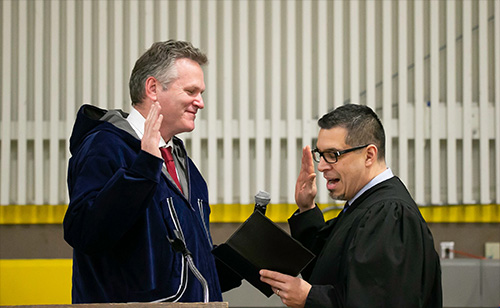










Weekly Specials
Online Shopping; Pickup or Delivery |
|










 Contact Contact 
 Webmail
Letters Webmail
Letters
 News Tips News Tips
 Copyright Info Copyright Info
 Archives Archives
Quick News
Search
 Alaska Alaska
 Ketchikan Ketchikan
 SE Alaska SE Alaska
Columns
- Articles
 Dave Kiffer Dave Kiffer
 Money Matters Money Matters
Historical
Ketchikan
 June Allen June Allen
 Dave
Kiffer Dave
Kiffer
 Louise
B. Harrington Louise
B. Harrington
Sports
 Ketchikan Links Ketchikan Links
Public Records
 FAA Accident Reports FAA Accident Reports
 NTSB
Accident Reports NTSB
Accident Reports
 Court Calendar Court Calendar
 Recent Filings & Case Dispositions Recent Filings & Case Dispositions
 Court Records Search Court Records Search
 Sex Offender Reg. Sex Offender Reg.
 Public Notices Public Notices
 Alaska Recall Alerts Alaska Recall Alerts
 Recalls.gov Recalls.gov
 AST Daily Dispatch AST Daily Dispatch
 KTN
Police Reports KTN
Police Reports
 Juneau Police Reports Juneau Police Reports
Weather,
Webcams
 Today's
Forecast Today's
Forecast
 KTN
Weather Data KTN
Weather Data
 AK
Weather Map AK
Weather Map
 AK Weathercams AK Weathercams
 AK Earthquakes AK Earthquakes

|
|

Monday
December 03, 2018

|
Alaska: Governor Dunleavy Takes the Oath of Office to Become Alaska’s 12th Governor; Swearing-in held in Kotzebue due to fog in Noorvik By MARY KAUFFMAN - Governor Mike Dunleavy took the oath of office at noon today becoming the 12th Governor of the State of Alaska. Standing by his side during the ceremony in the Western Alaska community of Kotzebue were First Lady Rose Dunleavy and daughters Maggie, Catherine and Ceil Ann. The swearing-in was originally planned to take place in Noorvik his wife's hometown but, in classic Alaska fashion, thick fog over Noorvik diverted the flight to Kotzebue.
Mandated by the Alaska Constitution, a governor is be sworn in by noon on the first Monday of December.
Today’s ceremony also marked the first time a U.S. governor was sworn into office above the Arctic Circle, reflecting Governor Dunleavy’s deep appreciation and close personal ties to the land and people of rural Alaska. It's also the first time an Alaska Governor has chosen to hold the ceremony in a rural community.
Governor Dunleavy was elected to be an agent of change. His administration’s core priorities are to make Alaska safe again, preserve the Permanent Fund Dividend program on behalf of every Alaskan, reduce state spending, get the economy moving again, champion rural schools, and uphold constitutional rights.
The Governor and First Lady planned to return to Anchorage this afternoon before traveling to Juneau for the open house at the Governor’s residence.
Governor Dunleavy was born and raised in a working-class family in Scranton, Pennsylvania. In 1983 he moved to Alaska where he spent almost 20 years in rural Alaska where he met his wife, Rose from Noorvik. Married almost 30 years, their three daughters, Maggie, Catherine, and Ceil were raised in both rural and urban Alaska. They have made their home in the Mat-Su Valley since 2004. Dunleavy was a former teacher and school administrator who lived in Kotzebue.
During the same ceremony, former State Senator Kevin Meyer was sworn in as Alaska's 14th Lieutenant Governor. In attendance for the ceremony were his wife Marty and his daughters Karly and Valentina.
The Lieutenant Governor has limited duties under the state constitution: to succeed the governor if necessary, and to oversee initiatives and referendums. The Lieutenant governor is in charge of the division of elections and guardian of the state seal.
Meyer served as a Republican member of the Alaska Senate from January 20, 2009 to December 3, 2018, representing District M. Lt. Governor Meyer was President of the Alaska Senate, leading a caucus of 14 Republicans and 1 Democrat from 2015 to 2017. Meyer served in the Alaska Legislature continuously from 2003 to 2018, in both the Alaska House of Representatives and Senate. He works as an Investment Recovery Coordinator for ConocoPhillips. Lt. Governor Meyer moved to Alaska 40 years ago from rural Beatrice, Nebraska to work for ConocoPhilips, a company he still works for today. The family lives in Anchorage. - More...
Monday PM - December 03, 2018
Alaska: Alaska Department of Revenue releases preliminary forecast; Fall 2018 Revenue Sources Book Delayed - Today Commissioner Sheldon Fisher released the Department of Revenue’s preliminary fall 2018 forecast, but has elected to delay issuance of the Fall 2018 Revenue Sources Book to allow the department to review recent developments in oil markets and their impact on the oil price forecast.
This preliminary forecast is the department’s first revenue projection following passage of SB 26, which established a protocol for transferring a portion of the earnings of the Permanent Fund to the general fund each year. The department is presenting the estimated Permanent Fund transfer as unrestricted revenue beginning in FY 2019. Under this structure, this Permanent Fund transfer will fund both the Permanent Fund Dividend as well as general government operations. |
|
Under this preliminary forecast, including the Permanent Fund transfers, FY 2019 General Fund unrestricted revenue (GFUR) is estimated to be $6.2 billion, a $3.9 billion increase from the spring 2018 forecast. FY 2020 GFUR is estimated to be $5.9 billion, a $3.7 billion increase from the spring forecast. Excluding the Permanent Fund transfers, the GFUR forecasts have been increased by $1.2 billion for FY 2019 and $0.7 billion for FY 2020.
For FY 2018, North Slope oil production averaged 518,400 barrels per day, a decline of 1.5% compared to FY 2017. The department forecasts that new fields will help increase production to 529,800 barrels per day in FY 2019 and 533,200 barrels per day in FY 2020 before entering a period of declining production through FY 2024. Production is expected to remain around 500,000 barrels per day over the next decade, as new developments help offset most of the declines from existing fields.
In the preliminary forecast, Alaska North Slope (ANS) crude oil prices are expected to average $76.00 per barrel for FY2019 and $75.00 for FY2020. This price assumption was finalized in in late October when ANS oil prices were around $75.00 per barrel. In the month since, oil prices have trended downward, with ANS oil prices closing below $60.00 per barrel on November 28, the first time that has happened since October 2017. - More...
Monday PM - December 03, 2018
Fish Factor: Future holds possibility of lower halibut catches By LAINE WELCH - Alaska fishermen are bracing for more cuts to their halibut harvest next year.
Results of this year’s surveys showed that the Pacific stock from California to the Bering Sea continues to decline, and will likely result in lower catches.
“We estimate that the stock went down until around 2010 from historical highs in the late 1990s. It increased slightly over the subsequent five years and leveled out around 2015 or 2016 and has been decreasing slowly in spawning biomass (total weight of mature fish to catch) since then,” said Ian Stewart, lead stock assessment scientist with the International Pacific Halibut Commission at its interim meeting last week in Seattle.
The IPHC oversees the Pacific halibut resource and sets annual catch limits for the U.S. and British Columbia.
A summary of the 2018 data show that coastwide fishery landings were about 23.5 million pounds, a low for the last decade. For Alaska, the total halibut take was nearly 16.7 million pounds, five percent shy of the fishery limit.
Total halibut removals by all users, including bycatch, added up to 38.7 million pounds in 2018.
Sixty-one percent of the catch went to commercial fisheries; recreational users took 19 percent and three percent went for subsistence use. Halibut bycatch in other fisheries accounted for 16 percent.
Halibut bycatch in the Central and Western Gulf totaled 2.1 million pounds, nearly all taken by trawl gear. In the Bering Sea and Aleutian Islands, halibut bycatch is projected at 3.5 million pounds, primarily by Seattle trawlers fishing for flatfish.
The average price at the docks for Pacific halibut this year was $5.74 per pound, compared to $6.53 in 2017. Nearly 2,000 fishermen participate in Alaska’s halibut fishery. Catch limits for 2019 will be revealed by the IPHC in Vancouver in January. - More...
Monday PM - December 03, 2018 |
Alaska Science: A rogue ice shelf covering the Arctic Ocean? By NED ROZELL - Fifteen miles inland from the frozen coast of the Arctic Ocean, Teshekpuk Lake is one of the largest freshwater bodies in Alaska. On its northern shoreline are sandy bluffs that hold fossils of walrus, ringed seals and beluga. Thousands of years ago, this shore was an ocean beach.
Digging into that beach in the middle of the tundra, a Fairbanks researcher has found evidence for what she describes as a “rogue ice sheet that isn’t on the map.”
Louise Farquharson wrote about that ice mass in a 2018 issue of the journal Geology. She describes something not currently in textbooks - a floating ice shelf that covered the Arctic Ocean and rammed into the coastline of northern Alaska about 80,000 years ago.
The first clues to the phantom ice cap emerged when Farquharson, a postdoctoral researcher at UAF’s Geophysical Institute, visited UAF’s Ben Jones at a research cabin he has restored and maintained on the northern shore of Teshekpuk Lake, about 60 miles southeast of Utqiagvik.
While Farquharson was helping Jones in a study of northern lakes a few summers ago, he encouraged her to gather some samples from the bluff, including remains of whales and shellfish that were thousands of years old.
“These exposures were dripping with fossils,” she said.
Back in the laboratory, Farquharson used a sophisticated method to estimate when buried grains of sand in the bluff were last exposed to sunlight. That’s when she discovered something puzzling — her samples dated to a time when global sea level was so low that the ancient beach should have been a hilltop.
“It was a very exciting turn,” she said.
What were all those ocean-dwelling creatures doing on a landscape that should have been high and dry, the stomping grounds of mammoths?
Something very heavy must have been pressing down on the land, forcing northern Alaska under water, Farquharson thinks. - More...
Monday PM - December 03, 2018
|
CHRISTINE FLOWERS: A Final Salute to a Good, Decent Man and Statesman - We all woke up Saturday morning to the news that President George H. W. Bush had died, the man many of us called "Papa Bush" to differentiate him from his son. And whereas the son is now, with the gentling buffer of time, becoming less polarizing and more relatable at a personal level, the father has always been a character of human dimension.
Politics might have divided us, and partisans might have criticized his policies and legacy, but virtually no one hated George Herbert Walker Bush. The closest we got to negativity was the sarcastic-yet-endearing caricature perfected by Dana Carvey in the old "Saturday Night Live" days where "read my lips" was a punchline.
Our 41st president was always a good man, and even though we can't ignore the controversies of his presidency, which seem ridiculously tame in comparison to the cataclysms of those in his successors' administrations (including his eldest son's), his years in public service seem benign in retrospect.
But that's not what we were thinking of when we turned on the television and saw that handsome face with the obligatory epitaphs and eulogies scrolling beneath it, and heard the laudatory comments from pundits and politicians. We weren't thinking about Desert Storm, or Dan Quayle, or broken economies or the failure to capture Saddam.
At least I wasn't, and from what I saw on the social media accounts of friends, neither were most of us. We were thinking about the fact that with the extinguishing of this human point of light, brighter than the thousands that he often referenced in speeches, we had lost one of the last good men of a generation that is now fading into the mists of time.
There is a mythology of the "Greatest Generation," popularized by Tom Brokaw and David McCullough and other cultural and critical historians who told us the stories of those who came of age during the Depression and World War II. Very few of those men and women are still alive, and so when one of the remaining flesh and blood examples of that generation leaves the Earth, we are forced to reflect on what that passing means. At a granular, personal level, the death of a beloved grandfather or uncle means the loss of an important family member, of his laughter, of her stories, of their dedicated spirits and the memories that only they could pass along. - More...
Monday PM - December 03, 2018
|

Political Cartoon: 1000 Points of Light
By Bill Day ©2018, Tallahassee, FL
Distributed to paid subscribers for publication by Cagle Cartoons, Inc.
1 in 4 government officials accused of sexual misconduct in the #MeToo era is still in office today By JAMILLAH WILLIAMS - At least 138 government officials, in both elected and appointed positions, have been publicly reported for sexual harassment, assault, misconduct or violence against women since the 2016 election, according to an analysis my colleagues and I conducted.
Three in every four of these officials have left or been ousted from their positions. But as many as 33 will remain in office by January.
Our study of those accused, posted online on Nov. 9, tallied reports of allegations of sex-related misconduct by government officials in the media over the past two years. Although these reports are likely the mere tip of an iceberg of sexual misconduct, they are yet another sign that #MeToo is slowly beginning to disrupt the power structure.
#MeToo accusations of government officials
Sexual assault is one of the most underreported violent crimes in the U.S., with 70 percent of victims never reporting to police.
Even after the rise of #MeToo, among survey respondents who said they had experienced workplace harassment in the past year, 76 percent did not report it. Many victims fear retaliation or think that nothing will change, concerns that may be heightened when the perpetrator holds a position of power – such as a government official.
We used tools like LexisNexis and Google News to search for national, state and local media stories on accusations of sexual harassment and assault published between November 2016 and October of this year. We found that the #MeToo movement, inspired by an October 2016 New York Times story on Harvey Weinstein, initially spurred a series of public accusations of government officials. Allegations reported in the media have since dropped off.
Most of the accused officials in our findings have since fallen from power. Of the 25 appointed officials, 23 have been fired or resigned. Of the 111 elected officials reported, 76 are no longer in office.
What’s more, some of these officials also face legal action, including seven civil lawsuits and 12 criminal charges. This type of accountability is historically unprecedented. - More...
Monday PM - December 03, 2018
US-China trade war truce: 2 reasons why it's unlikely to last By JEFFREY KUCIK - Presidents Donald Trump and Xi Jinping have agreed to a ceasefire in their increasingly painful trade war, yet their governments’ differing depictions of the deal show just how far apart they really are.
While the Trump administration emphasized trade issues such as a 90-day moratorium on raising tariffs and Xi’s concession to buy “very substantial” amounts of U.S. goods, China focused on diplomacy, regional issues and an agreement to try to quickly resolve their differences.
That’s because for China, Trump’s trade war has never been only – or even mainly – about trade.
As a political scientist following the escalating tensions, I believe that the statements coming out of the G-20 meeting reveal that a wide gap still separates Xi and Trump, both in terms of what matters most to them and their approach to getting it.
Territory trumps trade
One of China’s major concerns is U.S. interference in areas it considers “internal” matters.
A major flashpoint is Taiwan. Earlier this year, for example, Trump approved a US$330 million arms deal with Taiwan, following up on a previous deal of $1.3 billion.
These sales irk China because they directly conflict with Beijing’s long-standing policy that there is only one Chinese government, and Taiwan is merely a breakaway province that will inevitably be reunited with the mainland.
Another sticking point is the South China Sea, where the Chinese government has been increasingly aggressive in asserting territorial claims at odds with its neighbors. In the past, the U.S. has acted as a counterweight to China’s claims, Now inconsistency in Trump’s stance has added to tensions in the region.
Both of these issues have implications for the trade war. China is willing to absorb economic losses in exchange for standing firm on issues vital to the national interest.
That’s precisely why China’s statement highlighted Trump’s apparent commitment to continue respecting the so-called one China policy – something not mentioned by the Americans. As it so often does, trade takes a back seat to territory. - More...
Monday PM - December 03, 2018
 Webmail your letter or Webmail your letter or
 Email Your Letter To: editor@sitnews.us Email Your Letter To: editor@sitnews.us
|
Articles &
photographs that appear in SitNews may be protected by copyright
and may not be reprinted or redistributed without written permission
from and payment of required fees to the proper sources.
E-mail your news &
photos to editor@sitnews.us
Photographers choosing to submit photographs for publication to SitNews are in doing so, granting their permission for publication and for archiving. SitNews does not sell photographs. All requests for purchasing a photograph will be emailed to the photographer.
|
|
















The Local Paper is
available online.
Click here for this week's printed edition (PDF)

|
|

![]() Contact
Contact ![]()
![]() Webmail
Letters
Webmail
Letters![]()
![]() News Tips
News Tips![]()
![]() Copyright Info
Copyright Info![]() Archives
Archives![]() Alaska
Alaska![]() Ketchikan
Ketchikan![]() SE Alaska
SE Alaska![]() Dave Kiffer
Dave Kiffer![]() Money Matters
Money Matters ![]() June Allen
June Allen![]() Dave
Kiffer
Dave
Kiffer![]() Louise
B. Harrington
Louise
B. Harrington ![]() Ketchikan Links
Ketchikan Links![]() FAA Accident Reports
FAA Accident Reports ![]() NTSB
Accident Reports
NTSB
Accident Reports![]() Court Calendar
Court Calendar![]() Recent Filings & Case Dispositions
Recent Filings & Case Dispositions ![]() Court Records Search
Court Records Search![]() Sex Offender Reg.
Sex Offender Reg.![]() Public Notices
Public Notices![]() Alaska Recall Alerts
Alaska Recall Alerts![]() Recalls.gov
Recalls.gov![]() AST Daily Dispatch
AST Daily Dispatch![]() KTN
Police Reports
KTN
Police Reports![]() Juneau Police Reports
Juneau Police Reports ![]() Today's
Forecast
Today's
Forecast![]() KTN
Weather Data
KTN
Weather Data![]() AK
Weather Map
AK
Weather Map![]() AK Weathercams
AK Weathercams![]() AK Earthquakes
AK Earthquakes









































